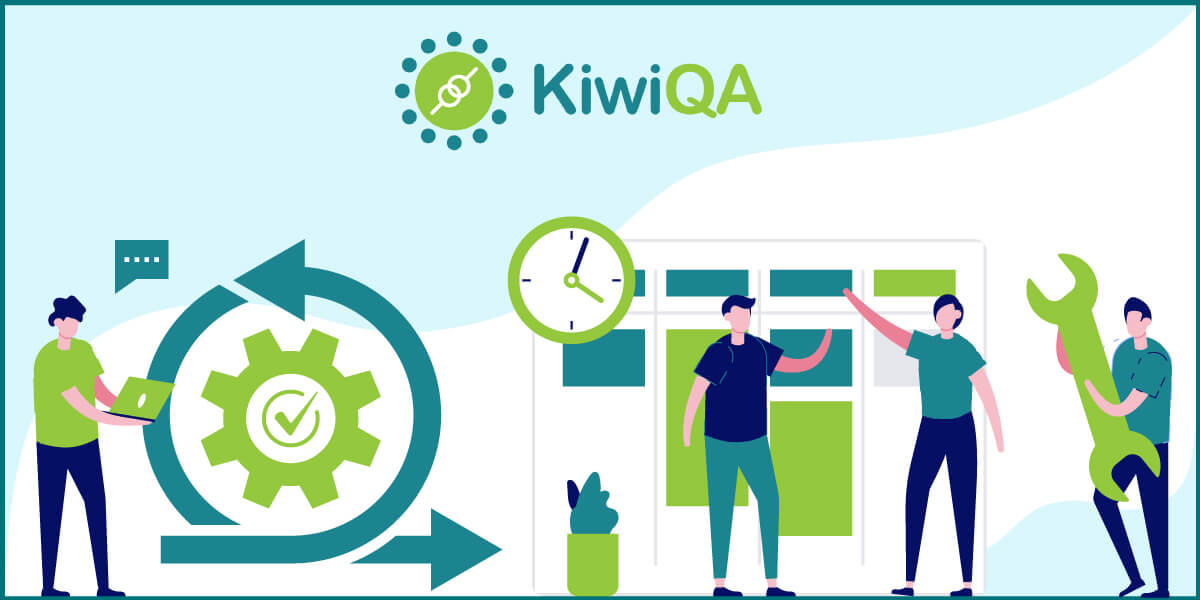Why Use Regression Testing In Agile Projects?

 KiwiQA
KiwiQATesting is one of the integral parts of any type of software, irrespective of the complexity or architecture of the same. Before the implementation is pushed to the production server, it is important that it goes through multiple rounds of testing.
Thorough testing helps locate bugs in the code (as a unit) along with unraveling issues when it is integrated with other modules of the project. No matter how simple a piece of code might look like, there is a possibility of it creating side-effects in the product. This is where regression testing comes into the picture.
Regression testing is a form of testing that helps in ensuring that the newly implemented (or pushed) code has not created any side effects on the existing functionalities of the product.
It is a black-box testing methodology to make sure that existing product functionalities work fine even after frequent changes are made to the code.
There are a number of questions around regression testing; some of the major ones are listed below:
In this blog, we deep dive into the various aspects of regression testing and explain why regression testing is a must in agile-first projects.
Here are the major forms of regression testing that can be used across all the forms of software projects:
As the name indicates, this is a form of regression testing that is taken up at a unit (or module) level.
This form of regression testing is performed when there are minimal changes in the source code. It ensures that the existing product functionalities work as expected even after new changes are added to the integration branch.
Also Read – A Comprehensive Guide To Agile Testing
In simple terms, this form of regression testing can be considered as the combination of unit regression tests and partial regression tests.
Complete regression testing is performed when there is a major product release; thereby ensuring that the existing functionalities as well as the newly implemented functionalities are working as per the product specifications.
This form of regression testing is taken up when implementation changes are performed across different builds. This helps in ensuring that the product functionalities work as expected even when there are changes at the build level (i.e. changes in major build number).
A regression testing Services Company like KiwiQA can be instrumental in setting up the regression testing best practices, thereby ensuring that maximum ROI (Return on Investment) can be achieved from regression testing.
Now that we have covered the essentials of regression testing, let’s look at how you can make the most out of regression tests in Agile projects. In agile projects, testing cycles are relatively short so that balance is maintained between the development of sprints and testing cycles that follow the same.
In short, regression testing has become much more relevant in agile projects as it ensures that functionalities are kept intact after every build (irrespective of whether the build type is a major or minor one).
Also Read – Best Practices of Agile Test Automation
Here are some the major benefits offered by Regression Testing in Agile Environments:
Sprints play a major role in Agile environments. Since regression testing is performed after every sprint, it helps in building a top-notch product that adheres to all the quality guidelines.
It helps in faster resolution of the issues that are unearthed during the sprint cycles. This eventually results in reducing the re-work, thereby freeing up the bandwidth of testers who can now focus on other important activities.
Improved end-user experience and commendable product quality are the two major outcomes of integrating regression testing in the Agile project cycle.
Iterative changes and frequent build cycles are the major highlight of Agile projects. This means that you have the potential to perform regression testing at a more accelerated pace. In a nutshell, regression testing in Agile helps in testing product functionalities at scale, thereby helping build a winning product for the end customers.
To execute a successful regression testing strategy, it is important to use the best practices in building scalable and reliable regression tests. Shown below are the major best practices of regression testing in Agile:
Automation testing offers umpteen benefits of scalability, reliability, faster TTM (Time to Market), and improved test coverage. The same benefits can also be obtained by leveraging automated tools for running regression tests.
Using automated tools, regression tests can be run in parallel. This helps in unearthing issues at a faster pace as well as achieving optimal regression test coverage. Partnering with an experienced and global regression testing company can prove to be extremely beneficial in such type of scenarios.
Also Read – 5 Best Practices to Perform Regression Testing
There are numerous benefits of using CI (Continuous Integration) and CD (Continuous Delivery) tools in Agile projects. It helps in running tests on a continuous basis eventually helping build a better quality product. Bugs would no longer be a part of the production stage by using CI/CD tools during the automation testing process.
The same principles can also be applied to automated regression testing. Regression test suite(s) can be a part of the continuous testing cycles which further helps in finding and solving issues at a quicker pace.
Akin to other forms of automation tests, it is important to define a regression testing strategy that takes into account the product-level requirements.
The plan should clearly highlight what part of regression testing will be automated and which part should be executed using the manual approach.
For building a fool-proof regression testing strategy, you have to cover all the important test scenarios (including exploratory tests).
The regression test suite should be aligned with the changes implemented in the features of the product. This ensures that your regression tests are not stale else they won’t be effective in finding bugs from the product.
Also Read – Regression, Smoke and Sanity Testing – What’s the Difference?
Though partial and unit regression testing will help in unearthing issues in the products, the effectiveness of regression testing can be achieved by using complete regression testing.
This will help in improving the product quality (to a higher percentage); something that cannot be achieved through simple or partial regression testing.
Faster software releases (adhering to the product quality guidelines) and top-notch end-user experience are extremely important in a competitive business environment.
This is where adoption of regression testing in Agile and DevOps practices helps in building quality products that have been end-to-end tested on a timely manner.
A regression testing services company like KiwiQA can help businesses in building a regression testing culture in organizations, eventually helping them run regression tests at an unprecedented scale.
Subscribe to our newsletter for some hand-picked insights and trends! Join our community and be the first to know about what's exciting in software testing.
Welcome to the testing tales that explore the depths of software quality assurance. Find valuable insights, industry trends, and best practices for professionals and enthusiasts.

Fill out and submit the form below, we will get back to you with a plan.
 CRN:
22318-Q15-001
CRN:
22318-Q15-001 CRN:22318-ISN-001
CRN:22318-ISN-001 CRN:22318-IST-001
CRN:22318-IST-001